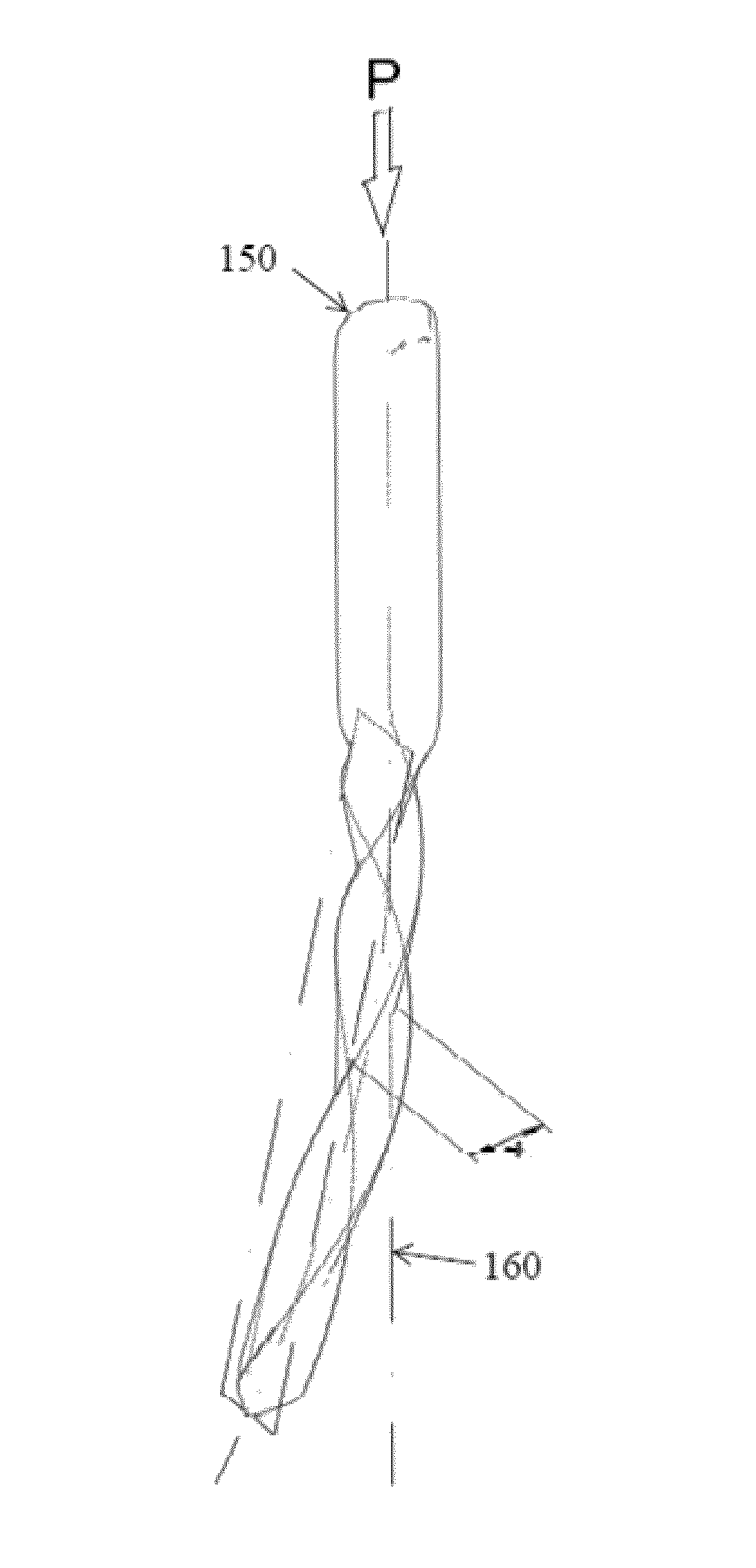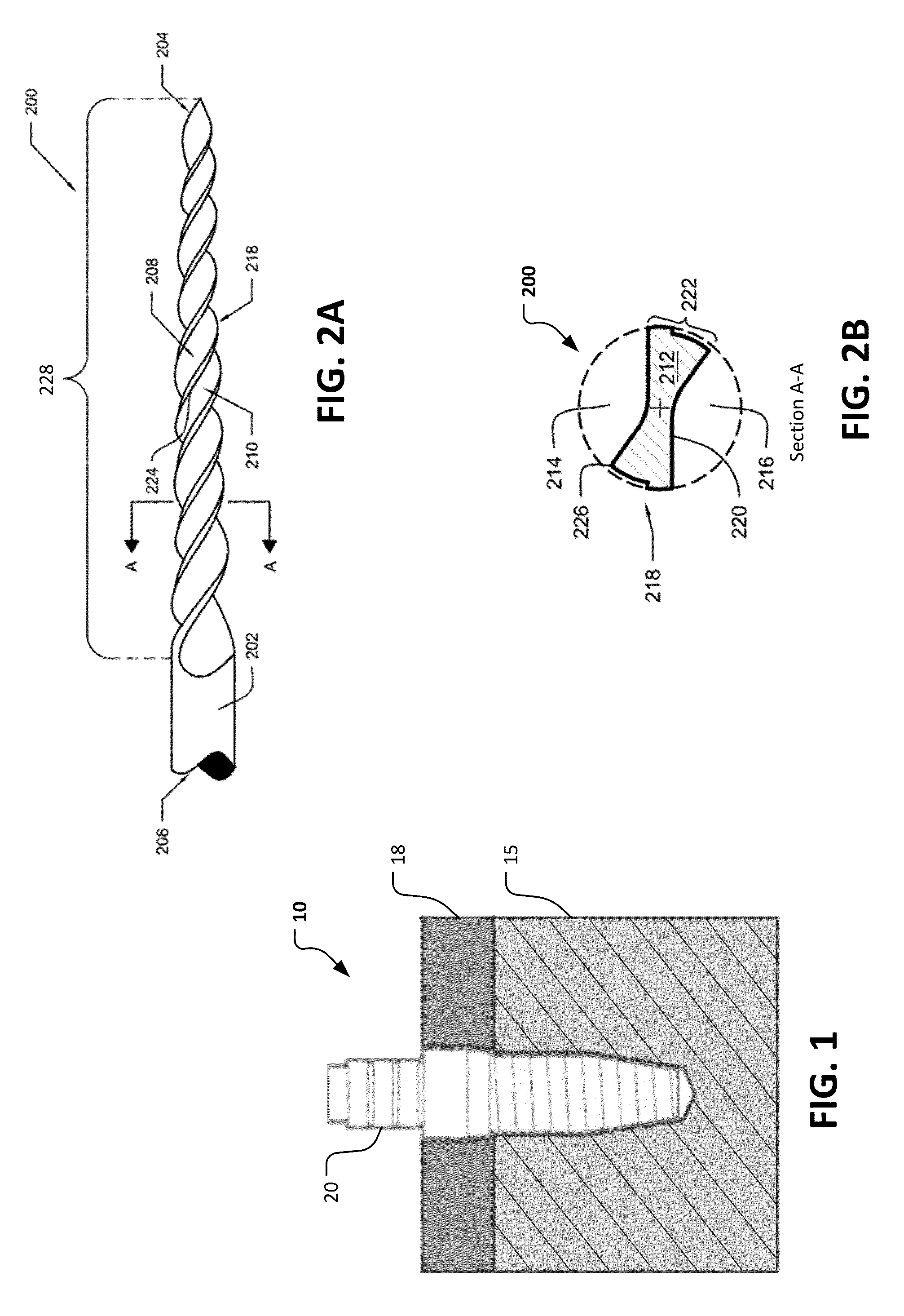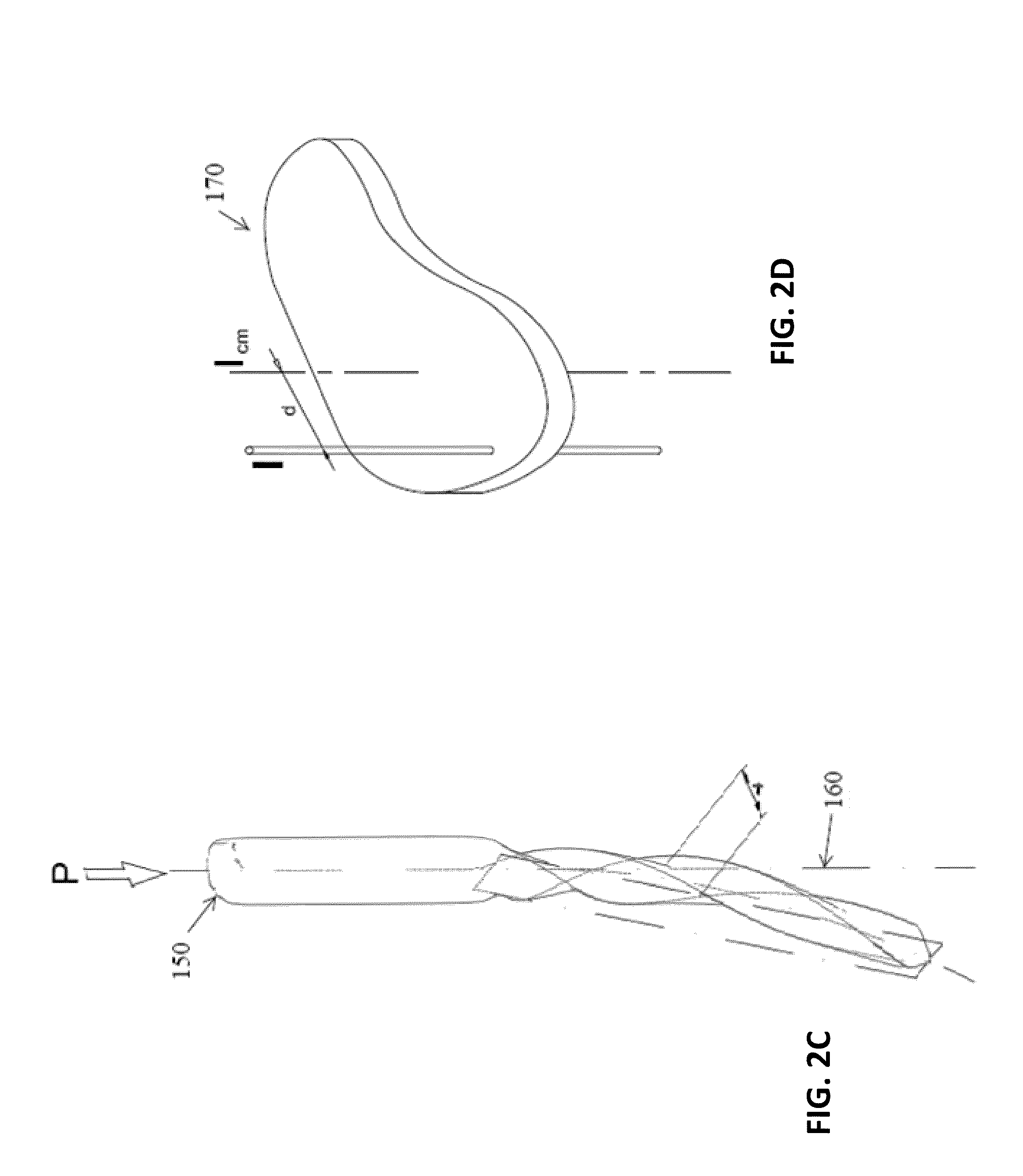Precessional-motion bone and dental drilling tools and bone harvesting apparatus
a technology of precessional motion and bone harvesting, which is applied in the field of orthopedic devices, can solve the problems of increased risk of complications, increased time, and less opportunity to collect bone for autografts, and achieves the effects of injuring the patient, and reducing the risk of fractur
- Summary
- Abstract
- Description
- Claims
- Application Information
AI Technical Summary
Benefits of technology
Problems solved by technology
Method used
Image
Examples
Embodiment Construction
[0069]In a first context, this document provides orthopedic devices and methods for their use. For example, novel bone drills for preparing an osteotomy are provided. The drilling instruments provided herein have at least some cross-sections (perpendicular to the axis of rotation) with centers of mass that are offset from the drills' axis of rotation. The offset center of mass may allow the drills to generate precessional motion or form mechanical waves when in use. In a second context, this document provides precessional-motion drilling tools for industrial use. For example, this document provides drill bits and methods of use for drilling a variety of materials including, but not limited to, metals, ceramics, wood, plasterboard, plastics, stone, composites, synthetics, silicon, and the like.
[0070]A great deal of mathematics and engineering has been dedicated to modeling, studying and solving the problems associated with high frequency and low frequency vibrations during drilling i...
PUM
| Property | Measurement | Unit |
|---|---|---|
| angle | aaaaa | aaaaa |
| diameter | aaaaa | aaaaa |
| lengths | aaaaa | aaaaa |
Abstract
Description
Claims
Application Information
 Login to View More
Login to View More - R&D
- Intellectual Property
- Life Sciences
- Materials
- Tech Scout
- Unparalleled Data Quality
- Higher Quality Content
- 60% Fewer Hallucinations
Browse by: Latest US Patents, China's latest patents, Technical Efficacy Thesaurus, Application Domain, Technology Topic, Popular Technical Reports.
© 2025 PatSnap. All rights reserved.Legal|Privacy policy|Modern Slavery Act Transparency Statement|Sitemap|About US| Contact US: help@patsnap.com



